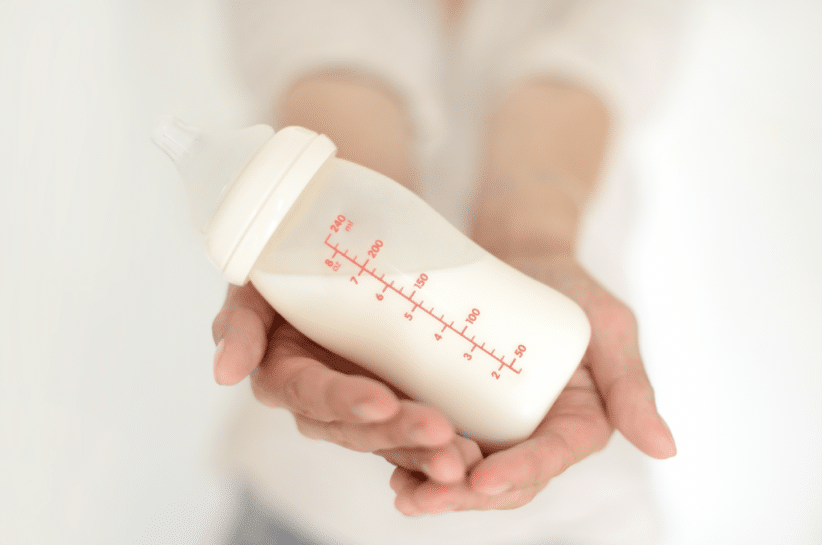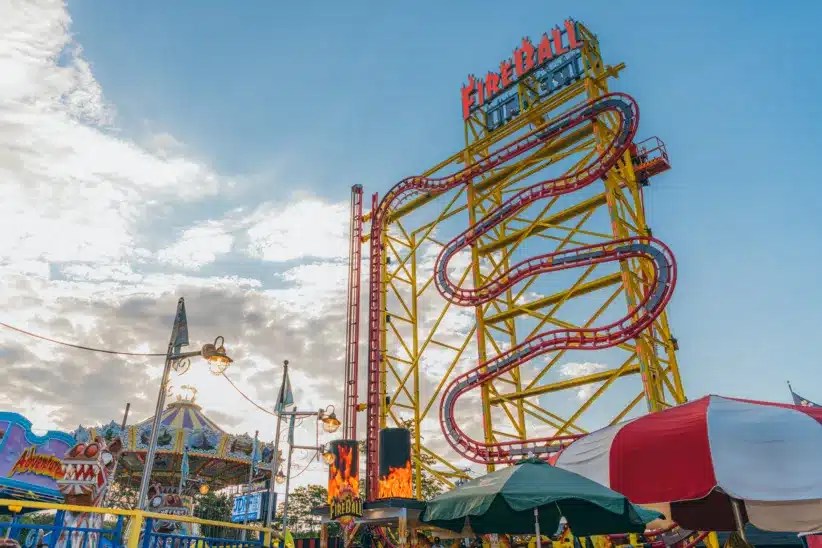 Hurricane Sandy was such an epic event that its ramifications for the city—and the country for that matter—are still unfolding. At the same time, we know we have to move forward and begin to address the enormous challenges and changes ahead. What’s a parent to think? As part of what’s sure to be one of the most important and ongoing conversations of our time, we sought out answers (reflections really) to some timely questions from a local politician, a climate scientist at Columbia, two leading rabbis, and an NYC parent (who, coincidentally, just wrote an essay for us about her family’s decision to stay in the city).
Hurricane Sandy was such an epic event that its ramifications for the city—and the country for that matter—are still unfolding. At the same time, we know we have to move forward and begin to address the enormous challenges and changes ahead. What’s a parent to think? As part of what’s sure to be one of the most important and ongoing conversations of our time, we sought out answers (reflections really) to some timely questions from a local politician, a climate scientist at Columbia, two leading rabbis, and an NYC parent (who, coincidentally, just wrote an essay for us about her family’s decision to stay in the city).
Let dialogue begin.
1. How can we better prepare ourselves?
From John Mutter, Professor at Columbia University and The Earth Institute: If you’re protected in the city, the thing that you’re most likely to be impacted by is loss of power. There are straightforward things you can do to preserve food in your house so that it doesn’t go bad. And that means getting a portable ice chest or stuffing your refrigerator full of ice and not opening it very much. You have to figure out how to manage through a period of no power.
If you live in a very exposed area where you might expect to get actual physical damage, the only thing you can do is—if people insist on living there—elevate the houses and put them further above sea level. Sensible people would arrange most of their living space and belongings not on the lower floor. People do this in the tropics. The main floor for living is not the one you walk into—it’s the next one up. People also need backup power generators because it takes a very long time [to repair] infrastructure damage. Making sure you have bottled water, canned food, flashlights, and candles makes a lot of sense.
I think it’s perfectly realistic to protect many of the subway entrances. The openings are not very large. You can have inflatable devices that would shut them off. You can elevate them as well. In other parts of the world, the entrance is elevated so that it’s above the sidewalk level. Tunnel entrances are a different thing—they’re much larger. Again, it’s not impossible. They can be protected around the sides or in the opening itself. It can be done. It might be costly, but it’s not beyond engineering science.
As I’m hearing it, people were out of communication for a long time and didn’t know where to go; cell phones stopped working. It’s possible to make a few areas and a few cell phone towers absolutely resilient to practically anything, and people would just need to know where they are.
I think everybody’s more worried. Sometimes it takes a demonstration to make clear what scientists have been saying forever.
2. Should we stay or should we go?
From Lani Serota, New York City mom: On the practical side, my family has invested in a Black Umbrella preparedness plan—which includes gear like waterproof information and contact cards, a customized set of maps for family reunification, and extra water, food, and supplies—that will help us coordinate together and reach safety in the event of an emergency. The city is an island and the fact that ingress and egress can be vulnerable is really scary sometimes. But the benefits always outweigh the risks of staying in NYC to me. Particularly in a time of crisis, I love the population density and the fact that things of world or national importance share my electrical grid. NYC, really Manhattan, is the ultimate squeaky wheel. New Yorkers continually blow my mind. We complain loudly, mobilize (for good and bad) aggressively, and help unquestioningly.
3. Where do we go from here?
From Andy Bachman, Senior Rabbi at Temple Beth Elohim: I am convinced that New York City has the potential to galvanize a national debate in this country about the obligation to serve, about the commanding voice that gives to those most in need, that denies artificial barriers based on income, race, nationality, whether you live in a high-rise whose power is restored or you live in high-rise by the sea, where darkness and desertion have covered you in the freezing winds of the past weeks.
The basic truths we now know we’ve always known: The poor and neglected have a mountain of unmet needs; our national, state, and city infrastructures need massive repair and reinvention; and yes, climate change is a reality.
But the new basic truth we learned as a city is that the desire to serve, to care, to hear the voice calling us to repair and rebuild the material and the human dimensions of life can transform the whole country. It can serve as the groundswell of service, the galvanizing historical moment, a draft for public service—not to fight wars that kill people, but to battle poverty, despair, and illiteracy; to recreate a public infrastructure; to build barriers at sea that limit a storm’s potential; and to open doors and create pathways of possibility for millions living on the edge. Hurricane winds destroyed large sections of the city’s outer perimeter; but a mere draft to public service could change our whole country for the better.
[There are over] one million New York City children in school. The Department of Education and United Federation of Teachers should make it perfectly clear that the curriculum should include relief efforts in the city. And high schools especially, training a new generation of students preparing to live in an interconnected world with unlimited needs and challenges, have a chance to redefine civic education in real time.
Nearly 75 schools have been turned into temporary shelters. Countless others are struggling to drain basements, clean floors, and assess damage, transportation logistics, food and clothing provisions, childcare for parents who need to work—all that joined up with meaningful volunteer efforts with city agencies, FEMA, and other aid organizations (including synagogues, churches, and mosques) are among the most invaluable educational experiences a young person can have. Let’s embrace this reality and educate our kids accordingly.
While the rush to “return to normal” may be tempting, I think there’s another way to look at it.
The “new normal,” as they say, is a world struggling to understand the potential dangers of global warming on new storm patterns that may unleash storms of this nature on an annual basis for years to come. Meteorological studies have much to say on last month’s events; so science and physics departments ought to pivot in this direction, adapt curricula accordingly, and teach to events. History, social studies, and civic classes have much to analyze in the response of government authority to the crisis, to compare and contrast with past efforts in American history, and ask the big questions. Among them, is it right that Americans have no requirement for national service? We come together so well in moments of crisis—why don’t we compel our young to serve their communities for two years after high school as a matter of law? That’s a stimulus bill I’d gather might earn bipartisan support.
Who knows? Maybe one day we’ll look back and say we were all veterans of a time when history called us to serve.
4. What can we learn?
From Joshua Strom, Associate Rabbi at Temple Shaaray Tefila: There’s so much for us to learn from Sandy. The first thing it teaches us is that, as Einstein once wrote: “We are here for the sake of each other, above all.” Usually absorbed in our daily routine, we often become absorbed into our own individual worlds, even with the best of intentions. We think less, or not at all, of others around us, as it seems the world demands some form of tunnel vision in order to achieve efficiency and success. A natural disaster like this is an equal opportunity offender, with no regard for distinguishing between rich and poor, powerful and not. Suddenly in the aftermath of something like this, we see the people around us as actual people, with thoughts and feelings and worlds all their own. It reminds us that, at the end of the day, we have so much more in common with each other than what differentiates us, more than we probably ever realized before. One of the most important outcomes I have seen so far and hope to continue to see is people coming together, unifying, supporting each other, pooling their wisdom and resources for the greater good.
Connected to that is the value of putting what happens in our lives in perspective. People who went without power, heat, running water for days or weeks—the thousands who, as I write this in late November, still don’t have any of those luxuries we take for granted virtually every other day of our lives—consider themselves fortunate if they and their loved ones made it through unharmed or if they still have a home to call their own. I know I’m not the only one who gets aggravated when my wireless internet doesn’t work how it’s supposed to. How silly, how ridiculous it is to get upset about such trivial things when so many have died and when our friends and neighbors have lost everything they ever owned.
It’s a shame that only in the aftermath of such tragic events do we take an opportunity to reset our perspective, to treat the little things and big things proportionately. If we can remember that every day of our lives, rather than wait until the bad things befall us, we will all be better, happier people.
5. What should we expect from our political leaders?
From James Molinaro, Staten Island Borough President: The President has spoken with me three different times, we have hundreds of National Guard, over 4,000 people from FEMA going up and down the streets knocking on doors… It’s a tragedy, it’s happened, and you can’t undo that, but it’s good to know that there are so many people in high places who are really concerned and working really hard day and night to correct this tragedy. There are a lot of people working in conjunction with each other.
It’s all going to take time. The damage was created in less than seven hours. It’s going to take a year and a half to two years to get back to normal. This had never happened in Staten Island in 300 years, so there was no plan. We’ve never had damage to the extent of what we have here. But we’ve done wonders [so far] working with FEMA, the governor, the mayor’s office. On a scale of 1 to 10, they’ve been performing at an 11. And, in the future, there will be a map laid out after this by all of us. We’ve really learned something.
What’s made everything so much easier for everyone, for me as an elected official, is coming together as a community. I saw this woman come to the station to pick up some supplies and she said she needed paper towels. She was given a pack of six paper towels. She ripped open the plastic, took two out, and gave four of them back. She said to give the four to someone else who needed it, because she could manage with just two. It made my day.





















